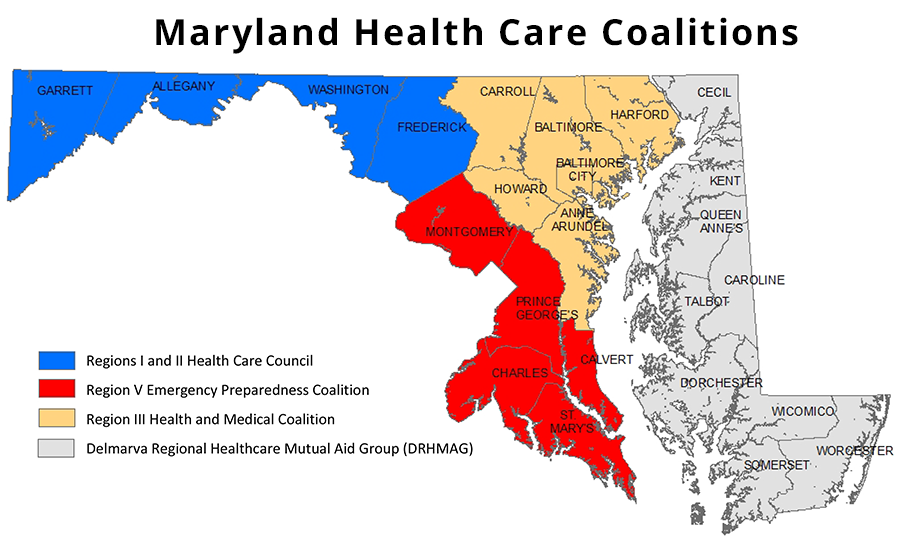
The mission of the Hospital Preparedness Program (HPP) is to support and enhance the ability of hospitals and health care systems to provide effective care and save lives during emergencies and disasters that exceed the day-to-day capacity of the health care and emergency response systems.
The Maryland Department of Health Office of Preparedness and Response receives federal funding on an annual basis from the U.S. Department of Health and Human Services and the Office of the Assistant Secretary for Preparedness and Response (ASPR) to advance Hospital Preparedness Program goals and objectives. The Maryland Department of Health awards these funds in the form of grants to our health care system partners across the state. These partners include hospitals and free-standing emergency departments, community health centers, state-managed facilities, poison control centers, emergency medical services, home care and hospice agencies, as well as regional health care preparedness coalitions. Our health care system partners utilize Hospital Preparedness Program funds to enhance their ability to prepare for, respond to, and recover from disasters and other emergencies that pose a threat to the health and safety of the community.
The Maryland Hospital Preparedness Program also prepares the health care system to save lives by supporting and investing in the development of regional health care coalitions. Health care coalitions seek to incentivize diverse and often competing health care organizations to work together to improve overall health care system preparedness. Maryland has four Hospital Preparedness Program-funded coalitions:
- The Regions I and II Health Care Council covers Maryland’s four westernmost counties (Garrett, Allegany, Washington, and Frederick counties).
- The Region III Health and Medical Coalition covers central Maryland (Anne Arundel, Baltimore, Carroll, Harford, and Howard counties, as well as Baltimore City).
- The Region IV health care coalition, the Delmarva Regional Healthcare Mutual Aid Group, covers the Eastern Shore of Maryland (Caroline, Cecil, Dorchester, Kent, Queen Anne’s, Somerset, Talbot, Wicomico, and Worcester counties).
- The Region V Emergency Preparedness Coalition covers southern Maryland and the National Capital Region (Calvert, Charles, Montgomery, Prince George’s, and St. Mary’s counties).
Each health care coalition is made up of hospitals, local health departments, emergency medical services and emergency management agencies, and other partners from the health care and emergency management community. Coalition membership is unique to each region and may include a variety of other community partners (e.g., urgent care, dialysis centers, pharmacies, local law enforcement), depending on the health care coalition's specific regional preparedness planning goals. Participation in a health care coalition has many benefits, including joint training and exercise opportunities, access to shared assets and equipment, and a venue to engage in coordinated preparedness planning with other health care partners.


